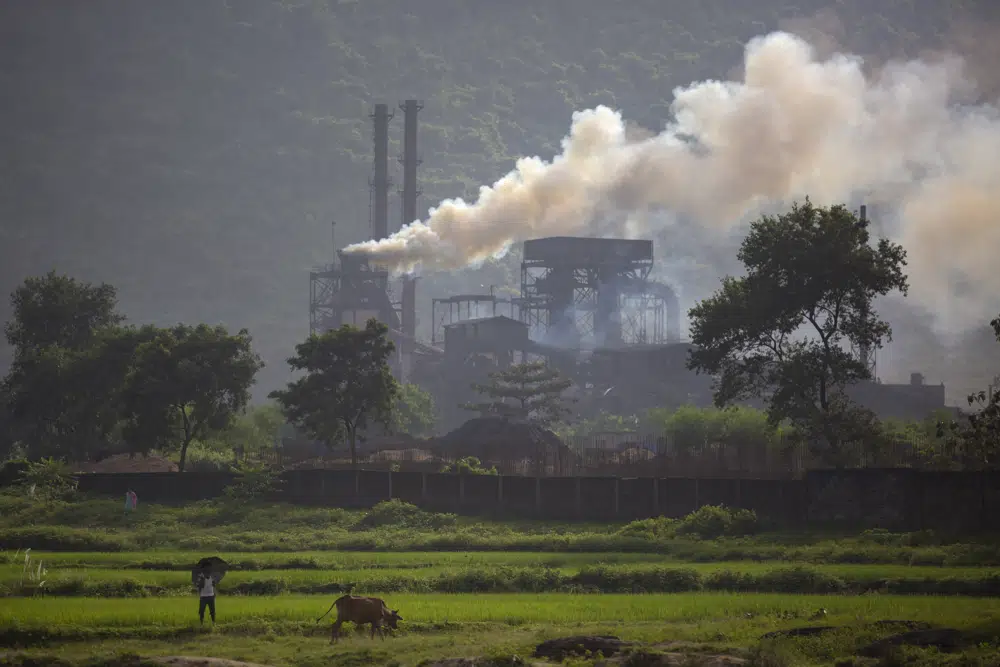If India stopped burning coal tomorrow, over five million people would lose their jobs. But for a price tag of around $900 billion over the next 30 years, the country can make sure nobody is left behind in the huge move to clean energy to curb human-caused climate change, according to figures released by New Delhi-based think tank Thursday.
The International Forum for Environment, Sustainability and Technology, known by the acronym iFOREST, released two reports detailing how much it will cost for India to move away from coal and other dirty fuels without jeopardizing the livelihoods of millions who still are employed in coal mines and thermal power plants.
Ensuring that everyone can come along in the clean energy shift that’s needed to stop the worst harms of climate change and guaranteeing new work opportunities for those in fossil fuel industries, known as a just transition, has been a major consideration for climate and energy analysts.
“Just transition should be viewed as an opportunity for India to support green growth in the country’s fossil fuel dependent states and districts,” said iFOREST head Chandra Bhushan.
To get the $900 billion figure, the group researched four coal districts in India and identified eight different cost factors, like setting up infrastructure and getting workers ready for the transition.
The biggest single investment to enable a just transition will be the cost of setting up clean energy infrastructure, which the report estimates could be up to $472 billion by 2050. Providing workers with clean energy jobs will cost less than 10% of the total amount required for a just transition, or about $9 billion.
The think tank said $600 billion would come as investments in new industries and infrastructure, with an additional $300 billion as grants and subsidies to support coal industry workers and affected communities.
“The scale of transition is massive. If formal and informal sector workers are included, we are talking about an industry that is the lifeline for 15 to 20 million people,” said Sandeep Pai, a senior associate at the Center for Strategic and International Studies, a Washington D.C. based think tank. “Reports like this are extremely important since the just transition conversation is beginning only now in India ... we need much more.”
India is one of the largest emitters of planet-warming gases behind only China, the U.S. and the EU. The country depends on coal for 75% of its electricity needs and for 55% of its overall energy needs and is still a far way off quitting.
Earlier this month, the Indian government issued emergency orders stipulating that coal plants are run at full capacity through this summer to avoid any power outages. The country’s coal use is expected to peak between 2035 and 2040, according to government figures.
Prime minister Narendra Modi announced in 2021 that the country will achieve net zero emissions — where it only puts out greenhouse gases that it can somehow offset — by 2070. On Monday, United Nations Secretary-General António Guterres urged nations to speed up their net zero goals, calling for developing countries to set a target of 2050. He was met with a muted response.
The reports recommends that the Indian government focuses on retiring old and unprofitable mines and power plants first. Over 200 of India’s more than 459 mines can be retired in this way.
“The energy transition has to start with coal,” said Jayant Sinha, who represents the coal-rich Hazaribagh constituency in the central Indian state of Jharkhand, adding that the switch to clean energy needs both funds and institutions to ramp it up. “Both of this must happen together for a successful transition,” he said.
Partnerships with developed countries to help the coal-reliant nations of South Africa, Indonesia and Vietnam make a just energy transition have been made in recent years. While these deals are steps in the right direction, they’re too small in scale to make a real impact, energy experts say.
It’s still not clear if India will be open to a similar just energy transition deal.
Indian leaders have expressed skepticism over climate funds promised by developed nations, pointing to a promise to give low-income and developing countries $100 billion every year to help with climate challenges back in 2009 that still hasn’t been met.

